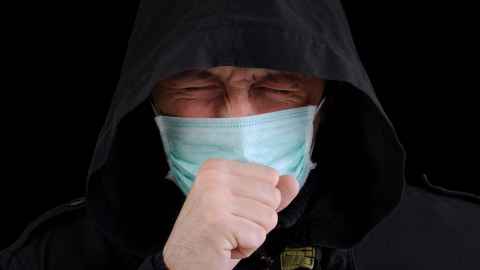A reminder that COVID-19 still isn’t airborne
1 April 2020
Opinion: A widely reported study revealed that COVID-19 can be made to be airborne. That doesn’t mean you’ll ever catch it that way, writes Associate Professor Siouxsie Wiles.

You may have seen several reports over the last few days that the COVID-19 coronavirus is airborne. This is in the news again because the study I wrote about a couple of weeks ago has now been peer reviewed and published in a prestigious medical journal, the New England Journal of Medicine.
The study, by Dr van Doremalen and colleagues, compared the ability of the COVID-19 coronavirus (SARS-CoV-2) and the SARS coronavirus (SARS-CoV-1) to survive on surfaces and in the air in the lab. They found that the COVID-19 coronavirus stayed viable for up to four hours on copper, up to 24 hours on cardboard, and up to two to three days on plastic and stainless steel.
The virus is still spread via droplets.
To look at the ability of the virus to survive in the air, van Doremalen and colleagues first had to make the virus airborne. To do this, they put the virus into a machine called a nebuliser. The job of a nebuliser is to turn a solution into a suspension of droplets in the air.
In other words, the researchers put the virus in a machine that would make it airborne and found that it could be airborne for a few hours. If they hadn’t found the virus could be airborne, I’d have fallen off my chair in surprise, given the job of a nebuliser is to make things airborne.
The more important and relevant study is this one by Dr Ong and colleagues, which sampled the surfaces and rooms of people in hospital with COVID-19. They found the virus all over the surfaces, which is what happens when something is spread via droplets. But they didn’t find any virus in the air samples. The other thing Ong and colleagues tested was whether disinfection of the rooms removed the virus, and it did.
Why did van Doremalen and colleagues make the virus airborne?
So, you might be asking yourself, well why did the researchers make the virus airborne if it doesn’t do that it in real life? This is a good question. There are lots of medical procedures that doctors and nurses perform that make what we call aerosols – small suspensions of droplets in the air. I described one of those procedures when I wrote about testing for COVID-19. It was the invasive procedure where liquid is put into someone’s lungs and then removed again. Aerosols can also be made by some scientific lab procedures which people researching the virus will be doing.
In other words, it is really important to know how long aerosol droplets of the COVID-19 coronavirus will hang around in the air because people like doctors, nurses, and scientists will be exposed to droplets like these when they carry out invasive medical procedures and laboratory experiments. That’s why they need to wear masks and eye goggles and other protective equipment. But it also tells us how long the air in those rooms will be a risk to people who aren’t wearing protection. And the answer was, for at least three hours, because that was how long they ran their experiments.
Associate Professor Siouxsie Wiles is a microbiologist from the Department of Molecular Medicine and Pathology in the Faculty of Medical and Health Sciences' School of Medical Sciences.
This article reflects the opinion of the author and not necessarily the views of the University of Auckland.
Used with permission from The Spinoff, Siouxsie Wiles: A reminder that Covid-19 still isn’t airborne, 21 March 2020.
Media contact
Gilbert Wong | Research Communications Manager
Mobile: 021 917 942
Email: gilbert.wong@auckland.ac.nz